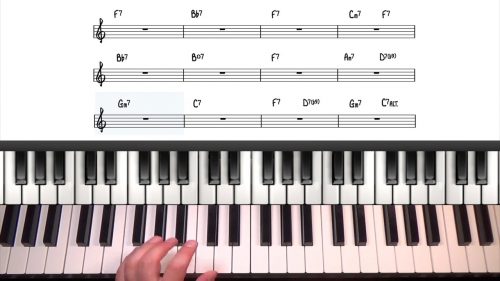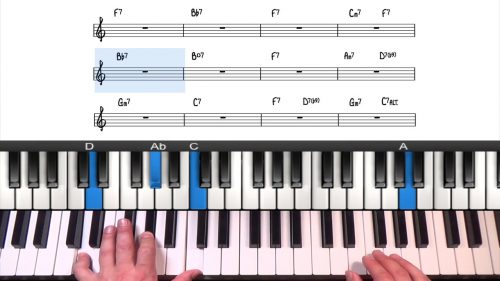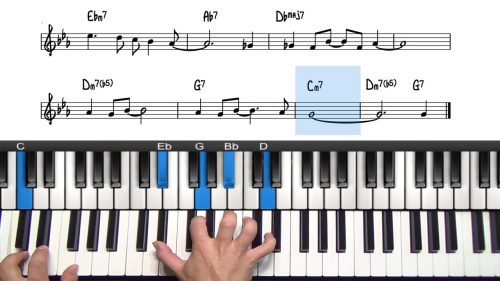How To Play Like Oscar Peterson
In this lesson we will take a look at one of the greatest pianists and virtuosos of all time, Oscar Peterson.
Born on August 15th, 1925 in Montreal, Quebec, Canada, his career extended over 60 years. He recorded hundreds of albums as a leader and as a sideman. He was influenced by Teddy Wilson, Nat King Cole, James P. Johnson and Art Tatum among others.
After his long time manager discovered him in Montreal and introduced him to New York City in 1949 at the Jazz at the Philharmonic Concert at Carnegie Hall, he worked with all the legends of jazz including Lester Young, Charlie Parker, Dizzy Gillespie, Coleman Hawkins and Stan Getz.
As a leader, after working in duo setting with Ray Brown, he formed a trio with Brown on bass and Barney Kessel on guitar, who was later replaced by Herb Ellis. This drumless trio worked from 1953 until 1958 and was, according to Peterson himself, the most productive and stimulating group he had. After Ellis left the group Peterson replaced him with drummer Ed Thigpen. This trio is my personal favorite, and it stayed together until 1965, recording several albums including two of my top 10 trio albums of all time, Night Train and We Get Requests.
After that he performed and recorded extensively in different settings, also returning to the drumless trio in the 1970’s with Niels-Henning Ørsted Pedersen on bass and Joe Pass on Guitar.
The Transcription
For this course I have chosen a transcription of the first two choruses of C Jam Blues, from the album Night Train. It is a 12 bar blues, but in the first two choruses of Oscar’s solo they play a 4 bar solo break, filled by Peterson’s right hand lines. This solo is a great example of the use of basic diatonic melodies over changes and how to combine that with bebop and blues scale material. In addition, this is a great example of Oscar Peterson’s distinctive grooving 8th notes.
Practice Tips
-
A large part of Peterson's distinctive sound is his time feel. Play along with the record and try to match his groove and swing feel.
-
This solo contains a lot of great bebop-style material. Choose a few phrases to learn and apply them while improvising over other blues or bebop tunes.
-
There are also some great examples of blues licks in this solo. These are great to use in many dominant chord situations.





Great work! As a rock musician back in the day we beat the blues scale to death and would never play the notes that Oscar plays over some of the harmony.
But my Gosh what a refreshing sound to accent with the blues but then play a major scale over dominants or minor scales over dominants particularly the Am7 scale over A7 but, as you say, with the Bflat giving a hint of the dominant sound.
It works and I never would have thought to try that. Usually over A7 in blues I am playing an arpeggio of chord tones or diminished dominant or altered scale but this sounds just as good and really makes his sound so different.
Thanks for your efforts!
Thank you Vincent, I’m glad to hear you are enjoying this solo, one of my all time favorites!
If you enjoy Oscar Peterson, you might like the transcription exercises on the site:
https://community.pianogroove.com/t/oscar-peterson-transcription-exercises/3936/1
All the best, let me know if I can help you with anything!
-Tuomo
Thanks Tuomo! Best!